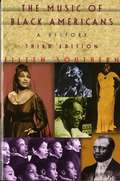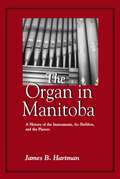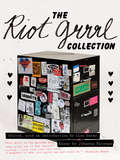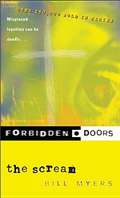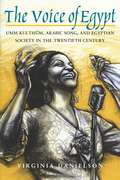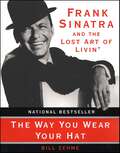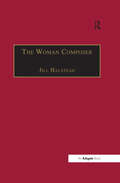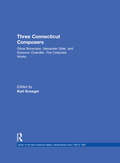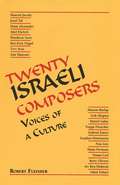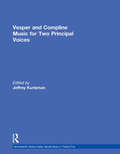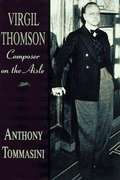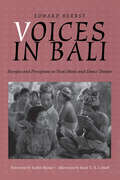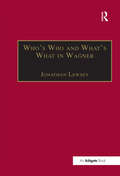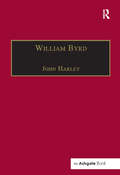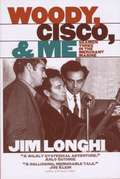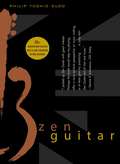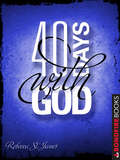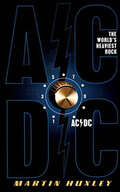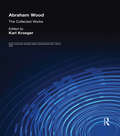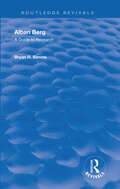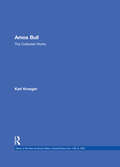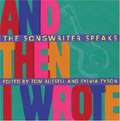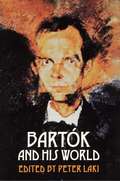- Table View
- List View
The Music of Black Americans: A History (3rd Edition)
by Eileen SouthernA comprehensive history from the colonial period through the late 20th century, by a leading author in the field of African-American music
The Organ in Manitoba: A History of the Instruments, the Builders, and the Players
by James B. HartmanPipe organs were once a central (and sometimes hotly debated) part of Manitoba's cultural life. The Organ in Manitoba portrays that history--the instruments, builders, players and critics--from the date of the earliest known installations to the 1990s, and includes information on musical organizations such as the Royal Canadian College of Organists. It documents over a century of evolution and changes, from concepts of tonal design to styles of musical commentary and tastes, and includes an inventory of installations and specifications for over 100 organs. Well-illustrated with photographs and excerpts from historical reviews and other documents, it will be of interest to musicians, teachers, and music, church, and cultural historians.
The Riot Grrrl Collection
by Kathleen Hanna Johanna Fateman Lisa DarmsFor the past two decades, young women (and men) have found their way to feminism through Riot Grrrl. Against the backdrop of the culture wars and before the rise of the Internet or desktop publishing, the zine and music culture of the Riot Grrrl movement empowered young women across the country to speak out against sexism and oppression, creating a powerful new force of liberation and unity within and outside of the women's movement. While feminist bands like Bikini Kill and Bratmobile fought for their place in a male-dominated punk scene, their members and fans developed an extensive DIY network of activism and support.The Riot Grrrl Collection reproduces a sampling of the original zines, posters, and printed matter for the first time since their initial distribution in the 1980s and '90s, and includes an original essay by Johanna Fateman and an introduction by Lisa Darms.Lisa Darms is senior archivist at the Fales Library & Special Collections at New York University, where she has created the Fales Riot Grrrl Collection.Johanna Fateman is a writer, musician, record producer, and member of the post-punk band Le Tigre. She, along with Kathleen Hanna and several other key Riot Grrrls, recently donated her zines and early writings to the Fales.
The Scream (Forbidden Doors, #9)
by Bill Myers"He has no concept of the danger he's in." Rebecca Williams is about to learn this first hand. She and her brother, Scott, are going to L.A. to the hottest concert in the country. What could be better than that? Rebecca knows she should be excited, but since she read Z's e-mail all she feels is apprehension. They've been asked to help the drummer for The Scream, the nation's top rock band. Rebecca has faced danger before -- so why does this assignment have her so on edge? Join Becka and Scott as they learn valuable truths about the lure of the supernatural, the reality of spiritual warfare -- and the truth of victory in Jesus. Ouija boards, witchcraft, voodoo, vampires and more are covered in these edge-of-your-seat thrillers for teens. Recommended for ages 12 and up.
The Voice of Egypt
by Virginia DanielsonUmm Kulthum, the "voice of Egypt," was the most celebrated musical performer of the century in the Arab world. More than twenty years after her death, her devoted audience, drawn from all strata of Arab society, still numbers in the millions. Thanks to her skillful and pioneering use of mass media, her songs still permeate the international airwaves. In the first English-language biography of Umm Kulthum, Virginia Danielson chronicles the life of a major musical figure and the confluence of artistry, society, and creativity that characterized her remarkable career. Danielson examines the careful construction of Umm Kulthum's phenomenal popularity and success in a society that discouraged women from public performance. From childhood, her mentors honed her exceptional abilities to accord with Arab and Muslim practice, and as her stature grew, she remained attentive to her audience and the public reception of her work. Ultimately, she created from local precendents and traditions her own unique idiom and developed original song styles from both populist and neo-classical inspirations. These were enthusiastically received, heralded as crowning examples of a new, yet authentically Arab-Egyptian, culture. Danielson shows how Umm Kulthum's music and public personality helped form popular culture and contributed to the broader artistic, societal, and political forces that surrounded her. This richly descriptive account joins biography with social theory to explore the impact of the individual virtuoso on both music and society at large while telling the compelling story of one of the most famous musicians of all time. "She is born again every morning in the heart of 120 million beings. In the East a day without Umm Kulthum would have no color. "--Omar Sharif
The Way You Wear Your Hat: Frank Sinatra and the Lost Art of Livin'
by Bill ZehmeIn The Way You Wear Your Hat, author Bill Zehme presents a masterful assembly of the most personal details and gorgeous minutiae of Frank Sinatra's way of livingmatters of the heart and heartbreak, friendship and leadership, drinking and cavorting, brawling and wooing, tuxedos and snap-brimsall crafted from rare interviews with Sinatra himself as well as many other intimates, including Tony Bennett, Don Rickles, Angie Dickinson, Tony Curtis, and Robert Wagner, in addition to daughters Nancy and Tina Sinatra. Capturing the timeless romance and classic style of the fifties and the loose sixties, The Way You Wear Your Hat is a stunning exploration of the Sinatra mystique.
The Woman Composer: Creativity and the Gendered Politics of Musical Composition
by Jill HalsteadUnlike previous anthologizing examinations of women and musical composition, this book concentrates on the reasons why there have been, and continue to be, so few women composers. Jill Halstead focuses on the experiences of nine composers born in the twentieth century (Avril Coleridge Taylor, Grace Williams, Elizabeth Maconchy, Minna Keal, Ruth Gipps, Antoinette Kirkwood, Enid Luff, Judith Bailey and Bryony Jagger) to explore the physiological, social and political factors that have inhibited women from pursuing careers as composers. Is there a biological argument for inferior female creativity? Do social structures, such as marriage, serve to restrict potential women composers? Is the gender of a composer reflected in the music they write? If so, how would this manifest itself? The conclusions that are reached are as complex and challenging as the questions that are raised. This powerful and provocative book aims to open up debate on these issues, which have all too often be avoided by critics and musicologists whose writings have perpetuated arguments that denigrate women's ability to compose. By confronting these arguments, this study will hopefully begin a reassessment of attitudes towards women and music, so that women composers are less of a rarity by the end of the next century.
There Was an Old Lady Who Swallowed a Fly
by Simms TabackThere was an old lady who swallowed a fly, a favorite American folk poem, was first heard in the United States in the 1940's. Using an ever-expanding die-cut hole, Simms Taback gives us a rollicking, eye-popping version of the well-loved poem.
Three Connecticut Composers: Oliver Brownson, Alexander Gillet, and Solomon Chandler: The Collected Works (Music of the New American Nation: Sacred Music from 1780 to 1820)
by Karl KroegerFirst Published in 1997. Routledge is an imprint of Taylor & Francis, an informa company.
Twenty Israeli Composers: Voices of a Culture
by Robert Fleisher Shulamit RanIsrael's contemporary art music reflects a modern society that is an intricate fabric of national and ethnic origins, languages and dialects, customs and traditions-a heterogeneous culture of cultures. It is a rich and distinctive environment-at once ancient and modern, spiritual and secular, traditional and progressive. <P><P> Twenty Israeli Composers, the first published collection of interviews with Israeli composers, explores this developing and distinctive music culture. The featured composers have earned distinction in Israel and abroad, and reflect the pluralism of Israeli art music, culture, and society. In first-person narrative, they discuss the interaction of inspiration, method, and cultural context in their work, revealing both international and national influence and scope. Three generations of contemporary composers-immigrants from Central and Eastern Europe, North and South America, and naïve sabras- share their ideas about music, the creative process, and their experiences as artists living and working in Israel. Robert Fleisher furnishes a biographical sketch of each composer, followed by a summary of recent accomplishments. The book also includes a bibliography, discography, and information for further study.
Untimely Meditations
by Friedrich NietzscheThe four short works in Untimely Meditations were published by Nietzsche between 1873 and 1876. They deal with such broad topics as the relationship between popular and genuine culture, strategies for cultural reform, the task of philosophy, the nature of education, and the relationship between art, science and life. They also include Nietzsche's earliest statement of his own understanding of human selfhood as a process of endlessly â becoming who one is'. As Daniel Breazeale shows in his introduction to this new edition of R. J. Hollingdale's translation of the essays, these four early texts are key documents for understanding the development of Nietzsche's thought and clearly anticipate many of the themes of his later writings. Nietzsche himself always cherished his Untimely Meditations and believed that they provide valuable evidence of his â becoming and self-overcoming' and constitute a â public pledge' concerning his own distinctive task as a philosopher.
Vesper and Compline Music for Two Principal Voices: Vesper And Compline Music For Two Principal Voices (Seventeenth Century Italian Sacred Music in Twenty Five #12)
by Jeffrey Kurtzman Anne SchnoebelenThis volume is part of a series of 25 full-score volumes of 17th-century Italian sacred music, a repertoire that has largely been unavailable for study or performance. It includes a comprehensive historical and biographical introduction, focuses on composers significant in their own time, and offers modern notation for contemporary performers.
Virgil Thomson: Composer on the Aisle
by Anthony TommasiniIn the first full-scale biography of a dominating figure in twentieth-century American music, Anthony Tommasini tells the richly textured story of Virgil Thomson's experiences as a composer, influential critic, and gay man. Writing with exclusive, full access to Thomson's papers and from extensive interviews and research, he recounts: Thomson's early years in turn-of-the-century Kansas City's strange mixture of antebellum racial divides. . . his first steps in the arts, guided by a troubled older man, himself a closeted homosexual in a time when disclosure could destroy a life. . . the crystallizing of his musical ambitions as an often-contentious student of Nadia Boulanger's in Paris. . . his pioneering collaboration with Gertrude Stein on Four Saints in Three Acts. . . his rivalry with fellow composers such as Aaron Copland. . . how he settled personal scores and advanced his own agenda during his reign on the New York Herald Tribune as America's most important, and best, music critic. . . his lasting impact on, and sometimes troubled interactions with, younger composers such as Leonard Bernstein, John Cage, Paul Bowles, Ned Rorem, and Philip Glass. . . and through it all the unending struggle to write, and win an audience for, music that spoke directly and simply to the life of his time. --BOOK JACKET. Title Summary field provided by Blackwell North America, Inc. All Rights Reserved
Voices in Bali: Energies and Perceptions in Vocal Music and Dance Theater (Music Culture)
by Rene T. Lysloff Edward Herbst Judith BeckerA scholar and trained performer of Balinese vocal music and dance, ethnomusicologist Edward Herbst brings unique talents to bear in this provocative book. The lessons of his Balinese masters enable him to offer fresh insight to this culture's aesthetics and cultural elements. Appropriating John Cage's effective style of "mixing theory, anecdote, context, philosophy, and humor," Herbst crafts an accessible body of work, compelling in substance and form. By merging the "Balinese concept of place-time-context with Cage's concepts of structure, method, and form, [Herbst] returns to the critical issue of what scholars and intercultural artists are doing, and 'what' is their 'object' under study." Undergraduates and scholars in fields as varied as theater studies and anthropology will find this book and companion CD (in print editions) an important resource not only for its knowledgeable treatment of Balinese culture, but as an example of a more personal and engaging style of scholarly discourse. The ebook edition includes embedded audio.
Who’s Who and What’s What in Wagner
by Jonathan LewseyWho‘s Who and What‘s What in Wagner aims to fill a notable gap in the extensive literature surrounding the works of Richard Wagner. It is a comprehensive reference work in which all the many complexities of character, plot and language in Wagner‘s operas, from Die Feen to Parsifal, are elucidated. For ease of reference the book is arranged alphabetically in the style of an encyclopaedia. Herein will be found succinct synopses of all the operas; in-depth biographies of all the characters; a lexicon of difficult words and phrases; plus an appendix comprising a select bibliography and discography. Whether the reader be a casual opera lover, or specialist involved in the production or performance of Wagner‘s works, this book will prove to be an invaluable companion. Contents include: Alphabetical Listing including: 86 in-depth character studies; Synopsis for each of the 13 operas; Over 1,000 further entries about names, places and artifacts that feature in Wagner‘s works; Index.
William Byrd: Gentleman of the Chapel Royal
by John HarleyThis is the first comprehensive study of William Byrds life (1540-1623) and works to appear for sixty years, and fully takes into consideration recent scholarship. The biographical section includes many newly discovered facts about Byrd and his family, while in the chapters dealing with his music an attempt is made for the first time to outline the chronology of all his compositions. The book begins with a detailed account of Byrd's life, based on a completely fresh examination of original documents, which are quoted extensively. Several previously known documents have now been identified as being in Byrds hand, and some fresh holographs have been discovered. A number of questions such as his parentage and date of birth have been conclusively settled. The book continues with a survey of Byrds music which pays particular attention to its chronological development, and links it where possible to the events and background of his life. A series of appendices includes additional texts of important documents, and a summary catalogue of works. A bibliography and index complete the book. Besides musical illustrations there is a series of plates illustrating documents and places associated with Byrd.
Woody, Cisco, and Me: Seamen Three in the Merchant Marine
by Jim LonghiIn his 1997 memoir, Jim Longhi, who passed away on November 22, 2006, gives the reader a first-hand account of Woody Guthrie and Cisco Houston during those crucial years with anecdotes that no other living person could tell; his action-packed account of their ship's dangerous journeys through mine-infested waters, his memories of their ships being torpedoed, his description of their shore leaves throughout North Africa, Italy, Scotland, England and France, his hilarious "on-board" stories of Woody as the ship's dishwasher, menu artist, totem builder, and impromptu entertainer for the troops. Here we have yet another side of Woody, described as only Jimmy could. Jimmy's more personal observations of Woody as a "bunk-mate" and friend are perhaps even more revealing. He describes one incident where Woody saved his life after a torpedo hit their ship. He also tells us of the day after Woody's four year-old daughter Cathy died in a house fire and Woody's response. The memories go on and on... His writing is so eloquent and descriptive one can't help but think... "what a great movie this would make!" Jim Longhi, has been a prizefighter, ladies' stocking salesman, merchant seaman, lawyer and politician as well as a playwright. During World War II he and Woody, shipped out in the Merchant Marine. Guthrie taught him to sing, play the guitar, and "to be brave." They entertained troops under fire and were torpedoed twice off Italy and Normandy. After the war, Longhi became a lawyer, representing Brooklyn's rank-and-file longshoremen against the gangsters. With three longshoremen murdered, Longhi became the spokesman for the movement. People from all walks of life came to help, Arthur Miller and Elia Kazan among others. Longhi urged them to make the movie "On the Waterfront" for which Longhi conceived the original idea. Thereafter, Longhi wrote his own play about the waterfront called "Two Fingers of Pride," and gave Steve McQueen his first job. Longhi's second play, "Climb the Greased Pole," was produced in London's Mermaid Theater, starring Sir Bernard Miles. "The Lincoln Mask," which was performed this year off Broadway. His latest play "The Lantern," a play about Lincoln, was just finished.
Zen Guitar: The Zen Way To Play Guitar, Book And Cd
by Philip Toshio SudoUnleash the song of your soul with Zen Guitar, a contemplative handbook that draws on ancient Eastern wisdom and applies it to music and performance.Each of us carries a song inside us, the song that makes us human. Zen Guitar provides the key to unlocking this song--a series of life lessons presented through the metaphor of music. Philip Sudo offers his own experiences with music to enable us to rediscover the harmony in each of our lives and open ourselves to Zen awareness uniquely suited to the Western Mind. Through fifty-eight lessons that provide focus and a guide, the reader is led through to Zen awareness. This harmony is further illuminated through quotes from sources ranging from Eric Clapton and Jimi Hendrix to Miles Davis. From those who have never strummed a guitar to the more experienced, Zen Guitar shows how the path of music offers fulfillment in all aspects of life--a winning idea and an instant classic.
40 Days with God: A Devotional Journey
by Rebecca St. JamesA unique devotional from the Grammy Award–winning Christian music star. Bestselling author Rebecca St. James has been a defining voice in contemporary Christian music for decades, winning a Grammy and multiple Dove Awards among other honors. In 40 Days with God, she offers an inspirational devotional based on her reflections about her relationship with her heavenly Father, addressing topics from sin and sacrifice to friendship and faith. Also included as a bonus to her fans are journal entries, song lyrics, and discussion questions.
AC/DC: The World's Heaviest Rock
by Martin HuxleyOver the decades, AC/DC has carved out a unique niche in the rock world. Thanks to their stubborn refusal to alter their aggressive, in-your-face style that has been their stock in trade, they have emerged as one of the essential cornerstones of contemporary hard rock. Frank, humorous, and accurate, this full-blooded biography takes a look this tenacious Australian quintet.
Abraham Wood: The Collected Works (Music of the New American Nation: Sacred Music from 1780 to 1820)
by Abraham WoodFirst Published in 1996. Routledge is an imprint of Taylor & Francis, an informa company.
Alban Berg: A Research and Information Guide
by Bryan R. SimmsAlban Berg: A Research and Information Guide is an annotated bibliography concerning both the nature of primary sources related to the composer and the scope and significance of the secondary sources which deal with him, his compositions, and his influence as a composer. The second edition will include research published since the publication of the first edition and provide electronic resources.
Amos Bull: The Collected Works (Music of the New American Nation: Sacred Music from 1780 to 1820)
by Karl KroegerFirst Published in 1996. Routledge is an imprint of Taylor & Francis, an informa company.
And Then I Wrote: The Songwriter Speaks
by Sylvia Tyson Tom RussellAn entertaining look at the craft of songwriting, in the words of songwriters themselves: a collection of anecdotes and quotations from well-known songwriters, past and present, on their influences, work habits, and how they came to write particular songs now ingrained in the popular psyche. The book forms an effective oral history, featuring songwriters from Irving Berlin and Noel Coward to Bob Dylan and Joni Mitchell; from Stephen Foster and Hank Williams to R. E. M. , Nirvana, and the Smashing Pumpkins. It's a book to be enjoyed by songwriters and music fans alike.
Bartók and His World (The Bard Music Festival #50)
by Peter LakiBéla Bartók, who died in New York fifty years ago this September, is one of the most frequently performed twentieth-century composers. He is also the subject of a rapidly growing critical and analytical literature. Bartók was born in Hungary and made his home there for all but his last five years, when he resided in the United States. As a result, many aspects of his life and work have been accessible only to readers of Hungarian. The main goal of this volume is to provide English-speaking audiences with new insights into the life and reception of this musician, especially in Hungary. Part I begins with an essay by Leon Botstein that places Bartók in a large historical and cultural context. László Somfai reports on the catalog of Bartók's works that is currently in progress. Peter Laki shows the extremes of the composer's reception in Hungary, while Tibor Tallián surveys the often mixed reviews from the American years. The essays of Carl Leafstedt and Vera Lampert deal with his librettists Béla Balázs and Melchior Lengyel respectively. David Schneider addresses the artistic relationship between Bartók and Stravinsky. Most of the letters and interviews in Part II concern Bartók's travels and emigration as they reflected on his personal life and artistic evolution. Part III presents early critical assessments of Bartók's work as well as literary and poetic responses to his music and personality.
